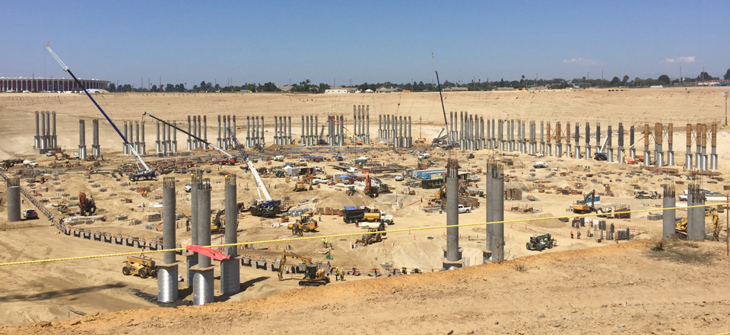
Foundations and the Development of the Chicago Caisson Method
The Chicago Caisson Method
I was excited to be able to conduct a little research into the history and development of the Chicago Caisson Method in preparation for the recently held Vertical CSP Foundations webinar. I learned quite a bit and wanted to share some of the key takeaways with all of you. If you’re interested in listening to the complete on-demand webinar, click here!
For those interested, I’ve noted some unique aspects to development of the Chicago Caisson Method below.
The population boom of the late 1800s required engineers to build taller and taller buildings. This resulted in a large, real-life experiment of trial, error, and correction. The first foundations used were essentially spread footings that were popular in New York City at the time and seemed to perform well.
However, New York City is underlain by shallow bedrock, and the subsoils under Chicago are quite different. At the end of the last ice age, retreating glaciers deposited a very thick layer of highly compressible clay, known colloquially as Chicago Blue Clay. This clay layer can be upwards of 50’thick in some areas and was the culprit of many building failures.
As engineers using spread footings kept pushing the envelope on building heights, they soon noticed severe problems with buildings experiencing differential settlement on the order of several feet. Engineers realized that foundations needed to go deeper so they turned to driving timber piles. Deep underground, just below the compressible Chicago Blue Clay layer, is a layer of extremely stiff clay known as hardpan. This hardpan is stiff enough to amply support buildings in the 35-40 story range.
Driving piles seemed to be a good option except that it can cause significant problems to the foundations of nearby buildings – a better way was needed. By the early 1890s, problems associated with driving piles were well known. General Sooy Smith is credited with designing and constructing the first caisson, used in 1893.
Still today, the Chicago Caisson Method persists as the foundation of choice; though, they are now drilled as opposed to hand excavated. The Chicago caisson is a deep drilled shaft with a bell at the bottom. Corrugated steel pipe (CSP) plays an important role in the construction of caissons.
- The sequence of the Chicago Caisson Method, is as follows:
- Drilling contractors will drive a temporary welded steel casing into the blue clay layer to seal off the shaft from water penetration.
- They will then drill the shaft to the appropriate depth and bell out the bottom.
- After the location, depth and bearing have been verified by the engineer, a permanent stay-in-place CSP liner will be dropped in so that the bottom is 2’ to 3’ below the bottom of the temporary casing.
- The contractor will place the rebar cage and pour concrete.
- Before the concrete sets up, the contractor pulls the temporary casing.
- Without the use of a CSP liner, this casing could not be pulled.
CSP is the construction mechanism that allows for expensive temporary casings to be reused. Without it, the cost of constructing Chicago caissons would increase tremendously. Super exciting to see how the sustainability of CSP continues to surpass most other construction materials.
